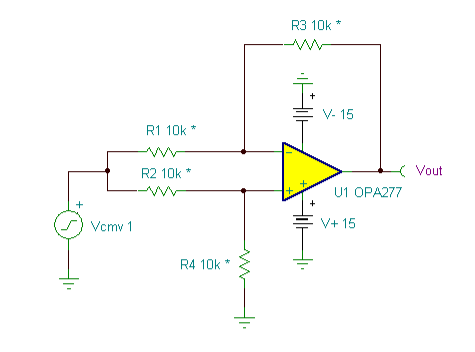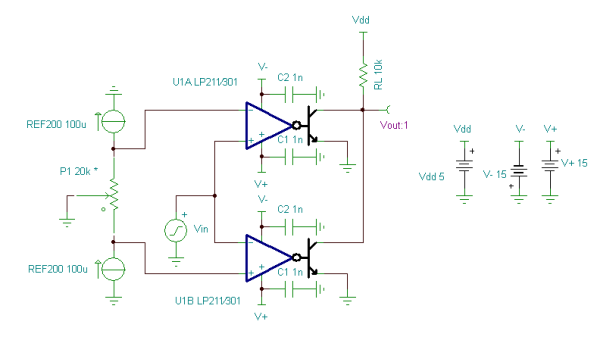Voltage-Controlled Electronic Load circuit:
This circuit is a voltage-controlled current sink.
It is scaled to provide a 500mA output current with a +1V input voltage.
This type of current sink can be very useful in power supply testing applications.
A R-R output op amp with an input common-mode range that includes its negative supply rail, such as an OPA251, is required for single- supply operation.
Re- scaling this circuit with other Darlington transistors or low- threshold N-channel MOSFETs can result in an output current sink capability of many amps.
(Circuit is created by Neil P. Albaugh, TI – Tucson)
Voltage-Controlled Electronic Load circuit:

Online Simulation of the Voltage-Controlled Electronic Load Circuit
The great feature of the TINA circuit simulator that you can analyze this circuit immediately with TINACloud the online version of TINA. Of course you can also run this circuit in the off-line version of TINA.
Click here to invoke TINACloud and analyze the circuit yourself, or watch our tutorial video!
You can send this link to any TINACloud customers and they can immediatelly load it by a single click and then run using TINACloud.
Michael Koltai
www.tina.com




